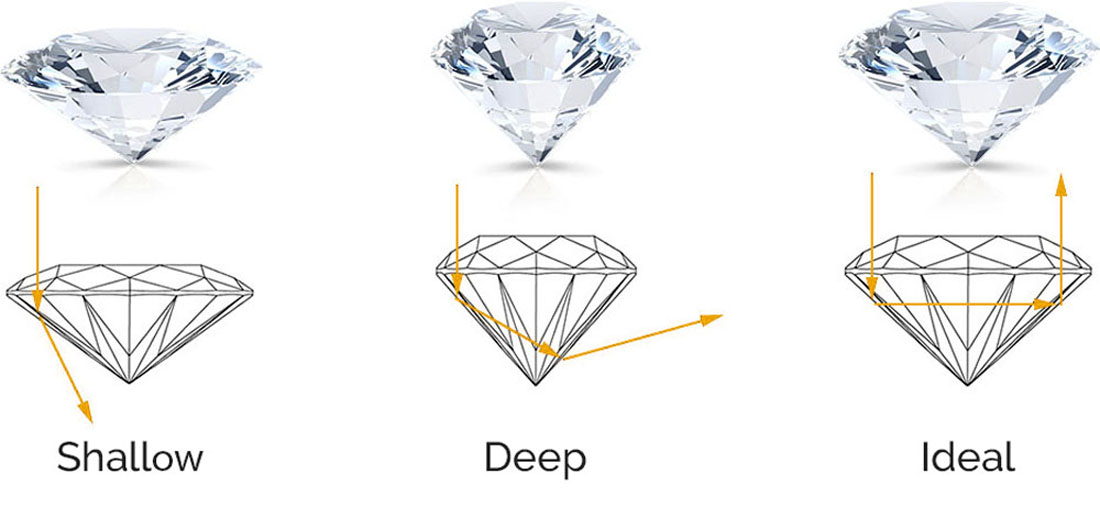Diamond Education
CUT
BUYERS GUIDE
- The diamond cut is one of the most important of the four Cʼs. You can have a very high quality diamond but if it has a poor cut then it will lack the brilliance you expect in a diamond.
- The average consumer purchases Good Cut – Very Good Cut
- Consumers with a larger budget typically shop between Very Good Cut – Ideal Cut
- Consumers with a low budget typically shop Fair Cut – Good Cut
- Very few consumers shop for Poor Cut
DIAMOND CUT SCALE
- Highest cut grading. Shows the most brilliance by reflecting the most light from the diamond. 1% of stones are reported to be in this category.
- Excellent Cut- reflects slightly less than Ideal and is almost a perfectly cut diamond.
- Very Good Cut- Shows nice brilliance not perfect but close. Stone will still have a lot of fire to it.
- Good Cut- Lower end on the cut grade. Stone will show brilliance but wonʼt reflect as much as the above grades. Still a quality diamond and helps keeping a lower budget.
- Fair Cut- Has a lot less brilliance compared to most diamonds. Shape may be off slightly. Effects value of stone.
- Poor Cut- Lowest quality of cuts. Stone will not reflect much light. Drastically effects value of stone.
CUT EDUCATION
Up until the middle of the twentieth century, there was no agreed-upon standard within the jewelry industry to judge diamonds. Around that time, the Gemological Institute of America (GIA) created the first, and now globally accepted, standards for classifying diamonds. The standards created by GIA include classifications for Cut, Color, Clarity and Carat Weight. Today, the 4C’s have become a universal method for assessing and assigning individual diamond characteristics for any diamond in the world. The use of the 4C’s for diamonds means diamond quality can be communicated in a universal language that both industry tradespeople and consumers alike can understand. Many people think that the term “Cut” when referenced with the 4C’s means “shape.” Although it is easy to understand why the two terms could be confused, within the language of diamond buying, the two actually have nothing to do with each other. The term cut refers to the elements of proportion, symmetry and polish that have gone into fashioning the diamond, and how well these elements work together to deliver brightness, fire and scintillation. Having an excellent cut on a diamond is crucial when it comes to affecting the stoneʼs final beauty and value. While the rest of the 4C’s are pretty straightforward in their assessment, Cut is the most complex and technically difficult to analyze. When grading the cut of a diamond, GIA also takes into account how the diamond was designed and created. This includes assessing its weight relative to its diameter, the thickness of its girdle, the symmetry of its facet arrangement, and the quality of the polish on those facets. While all of the 4C’s are important, if you are looking for a diamond with sparkle and fire, the cut is going to be your most important element to consider when buying a diamond. Because cut is the biggest factor in creating the dazzling play of light everyone associates with a diamond, if you want a diamond with brilliance and fire, then the option of purchasing a poorly cut diamond is not for you. The professional jewelers in our Jewelers Connect network can help answer all your questions on Cut, and help you find the diamond that is perfect for you, and your budget.
